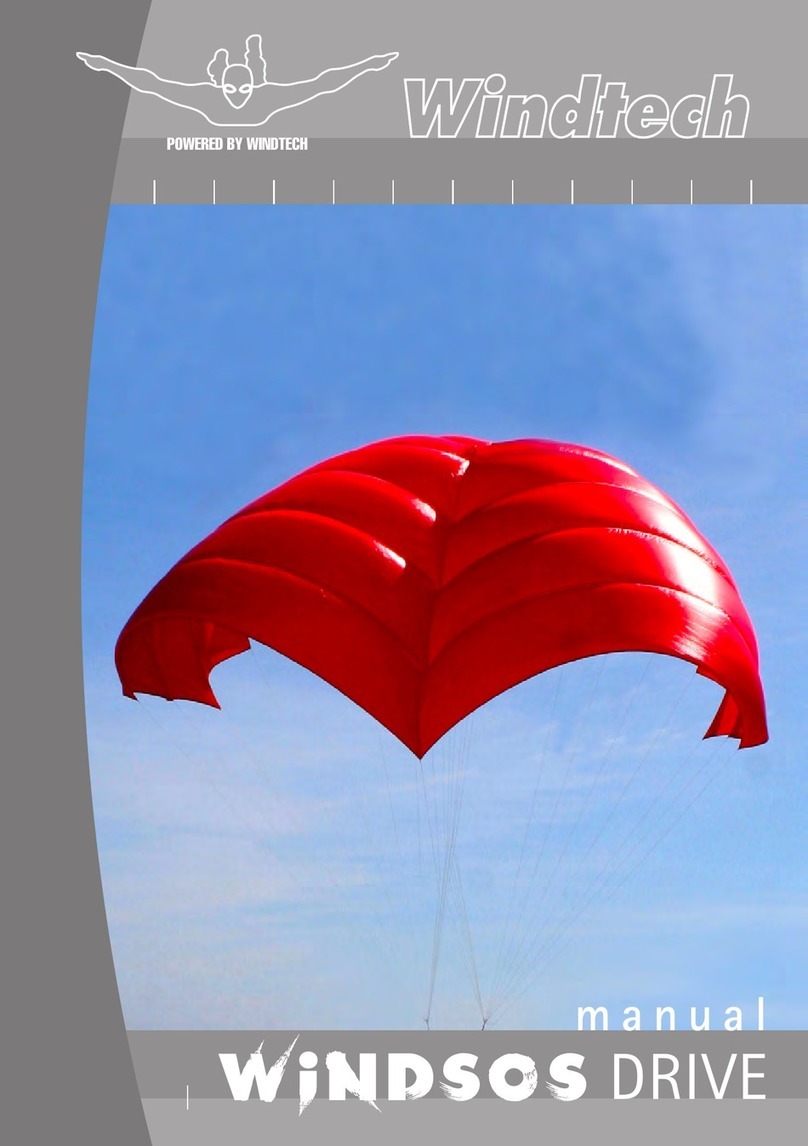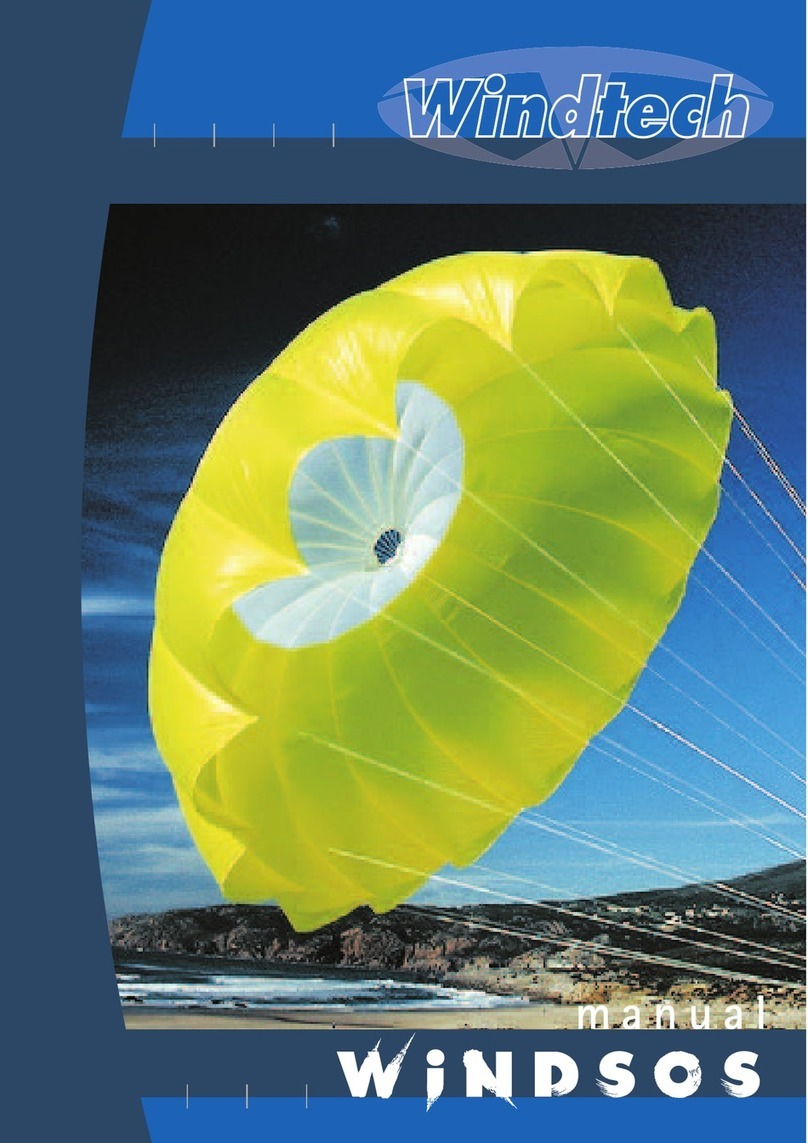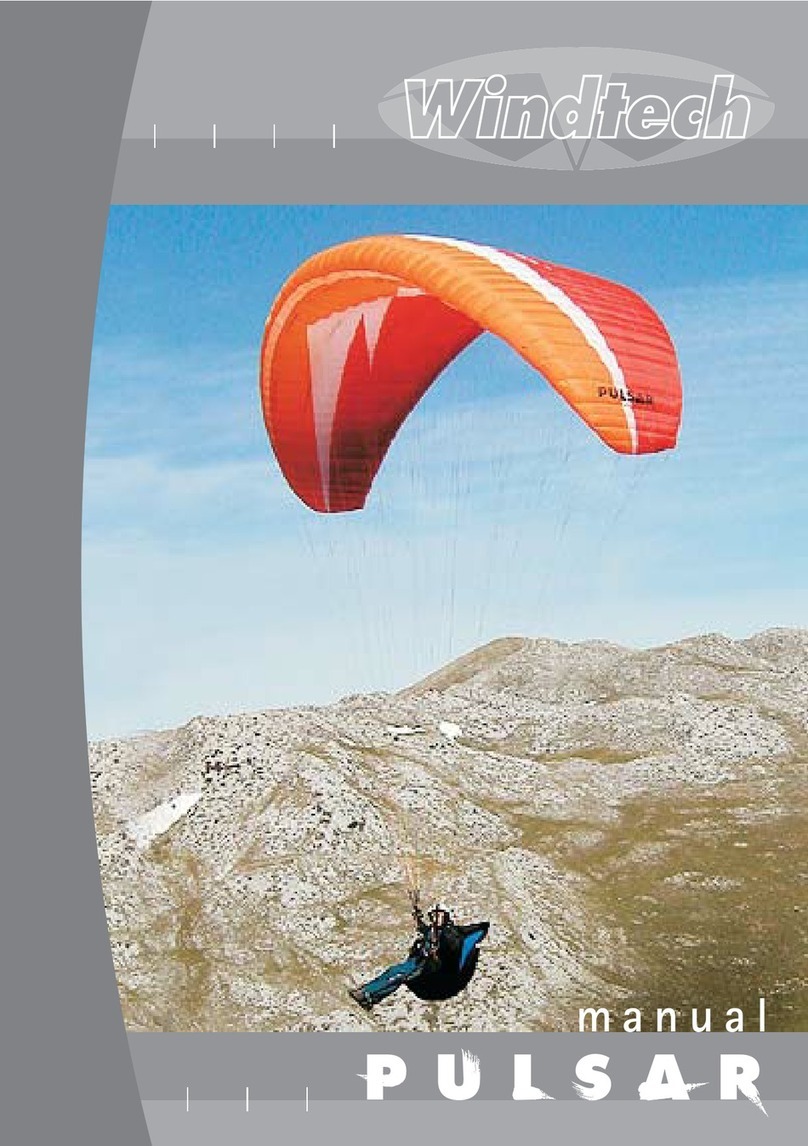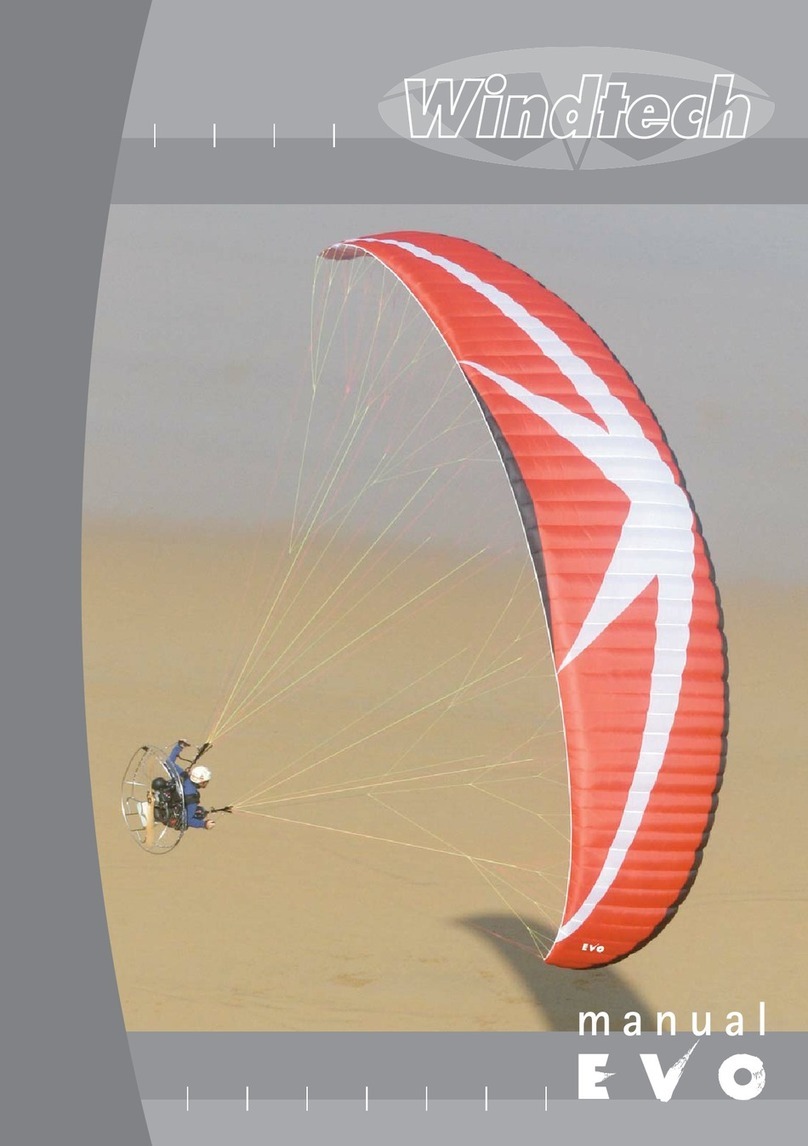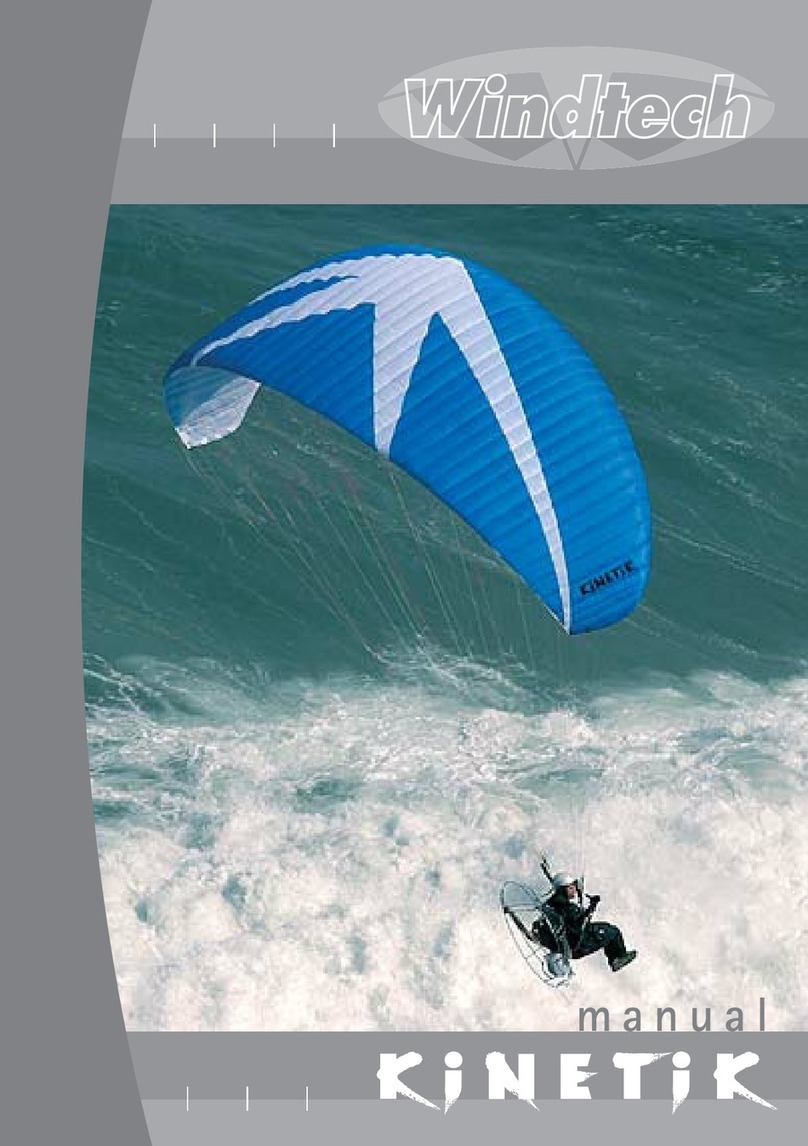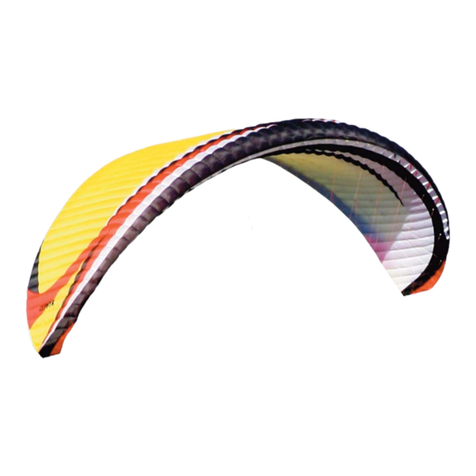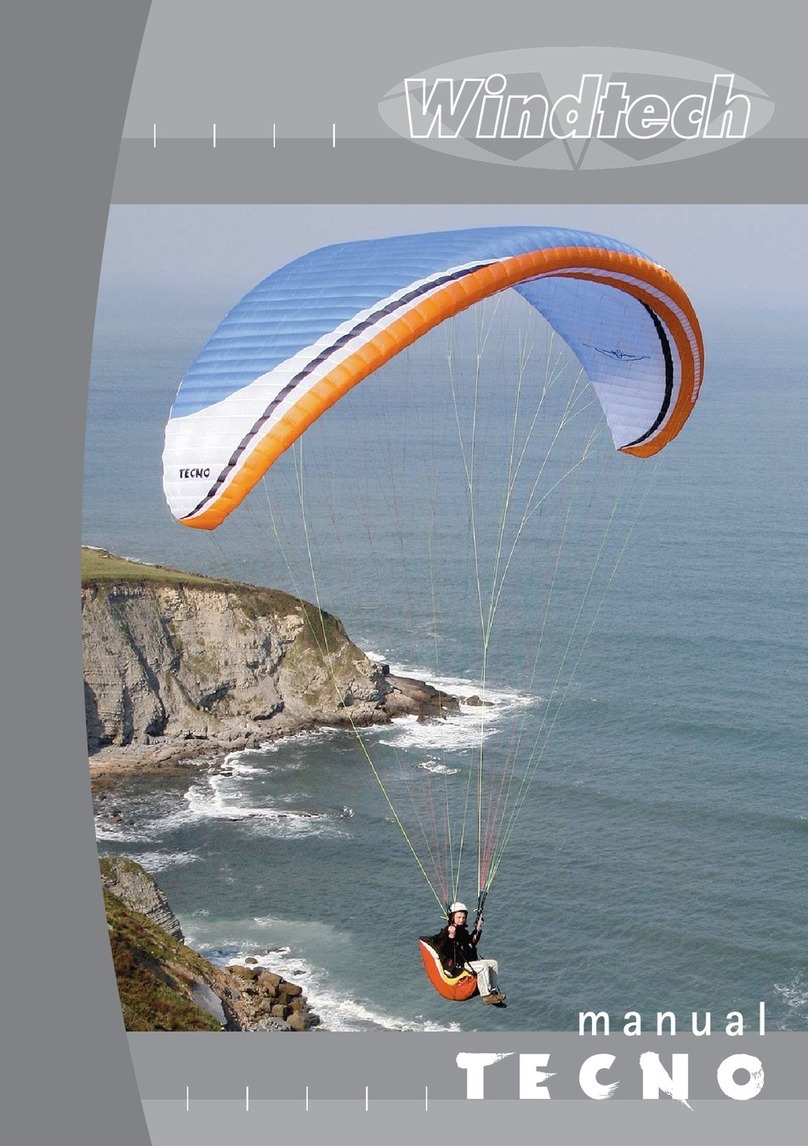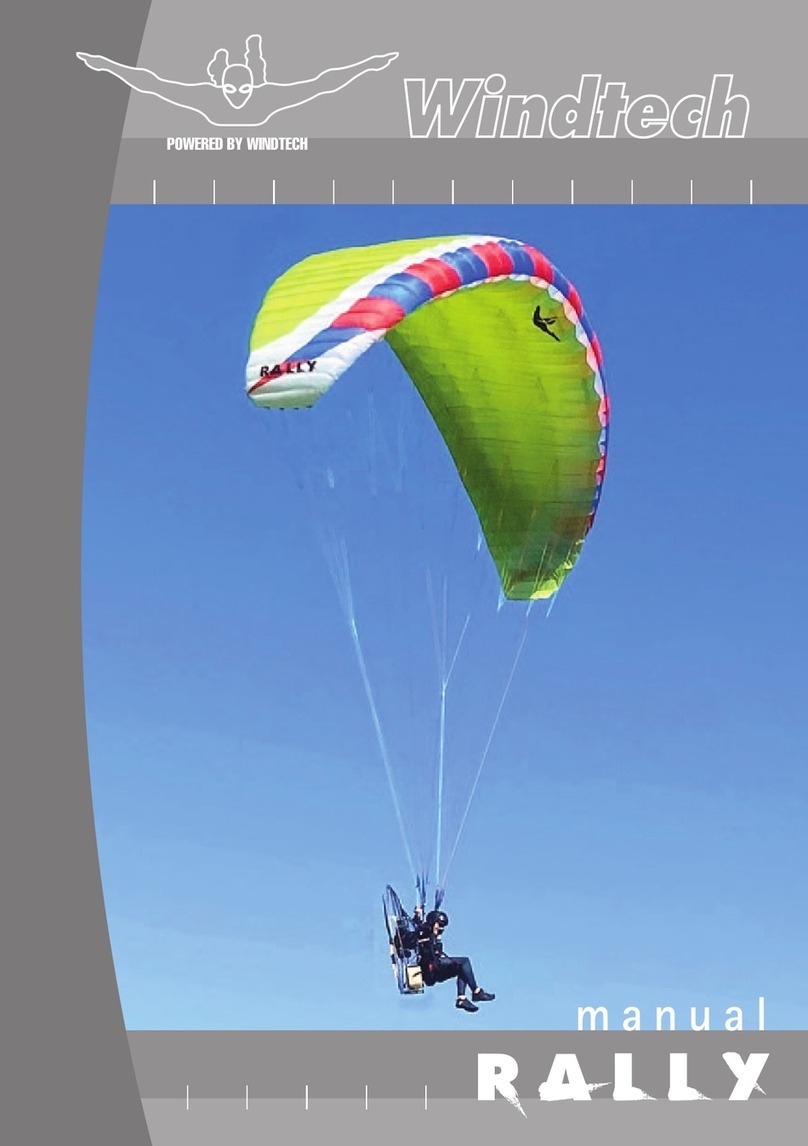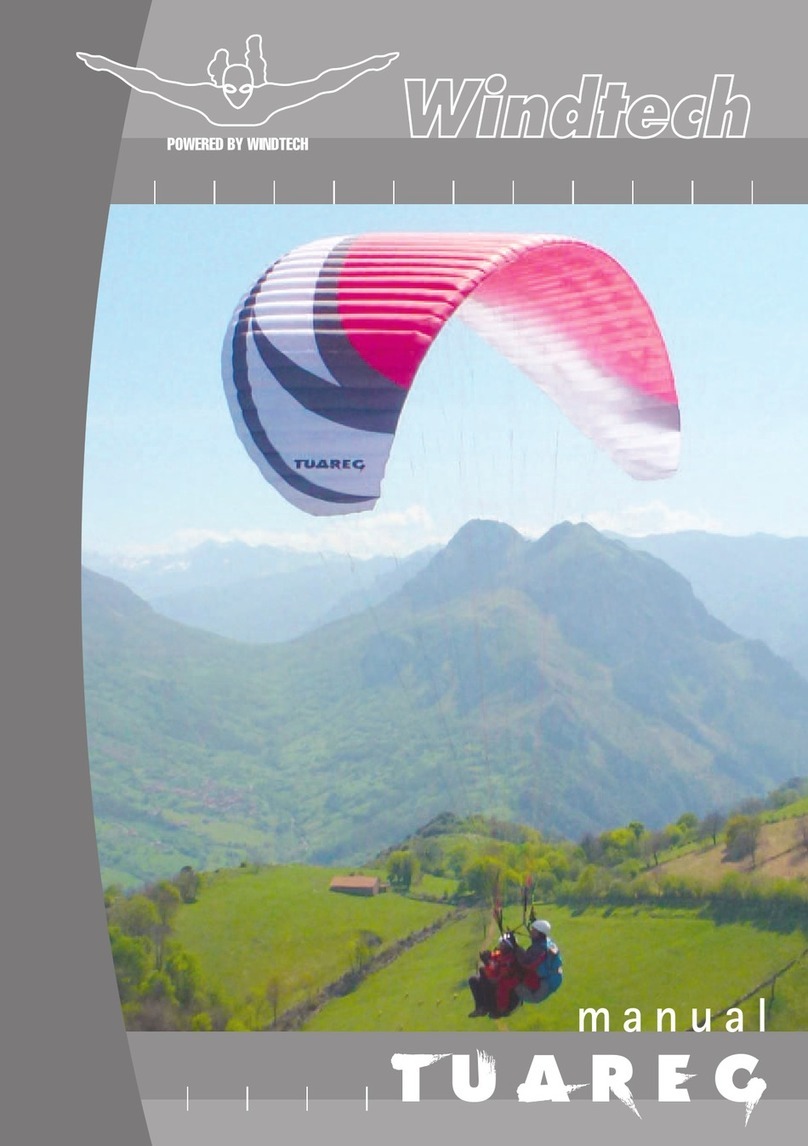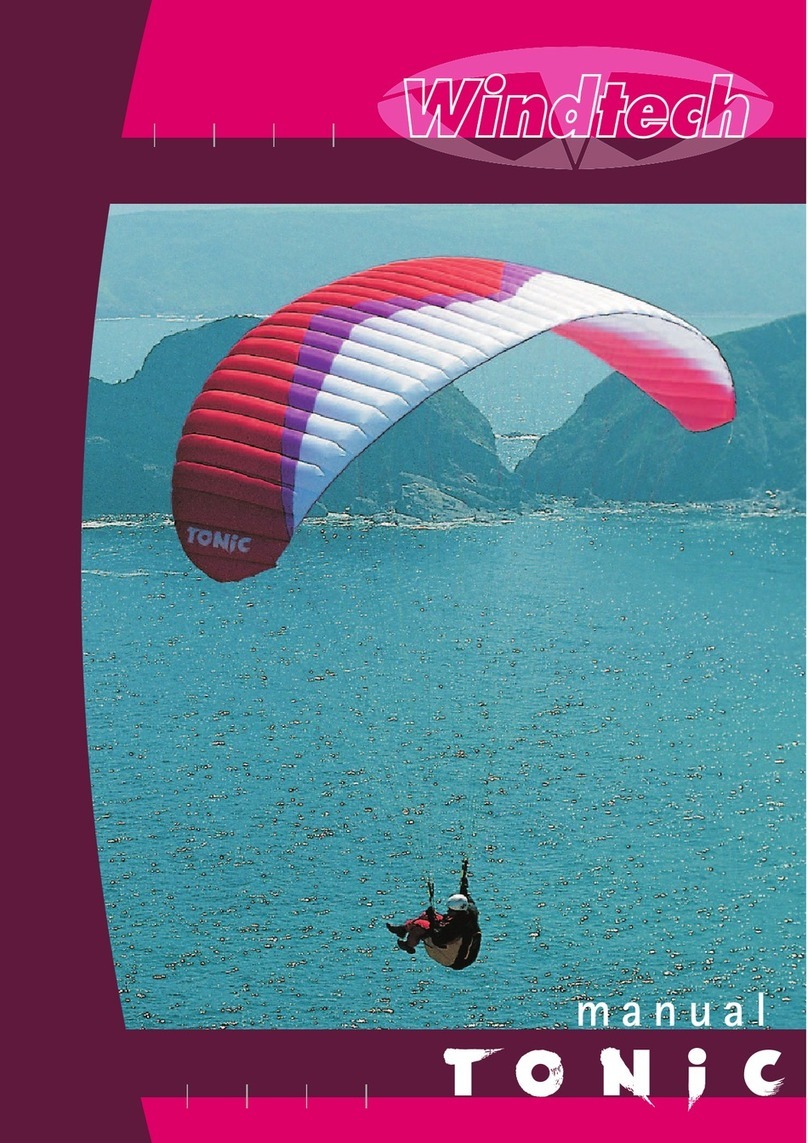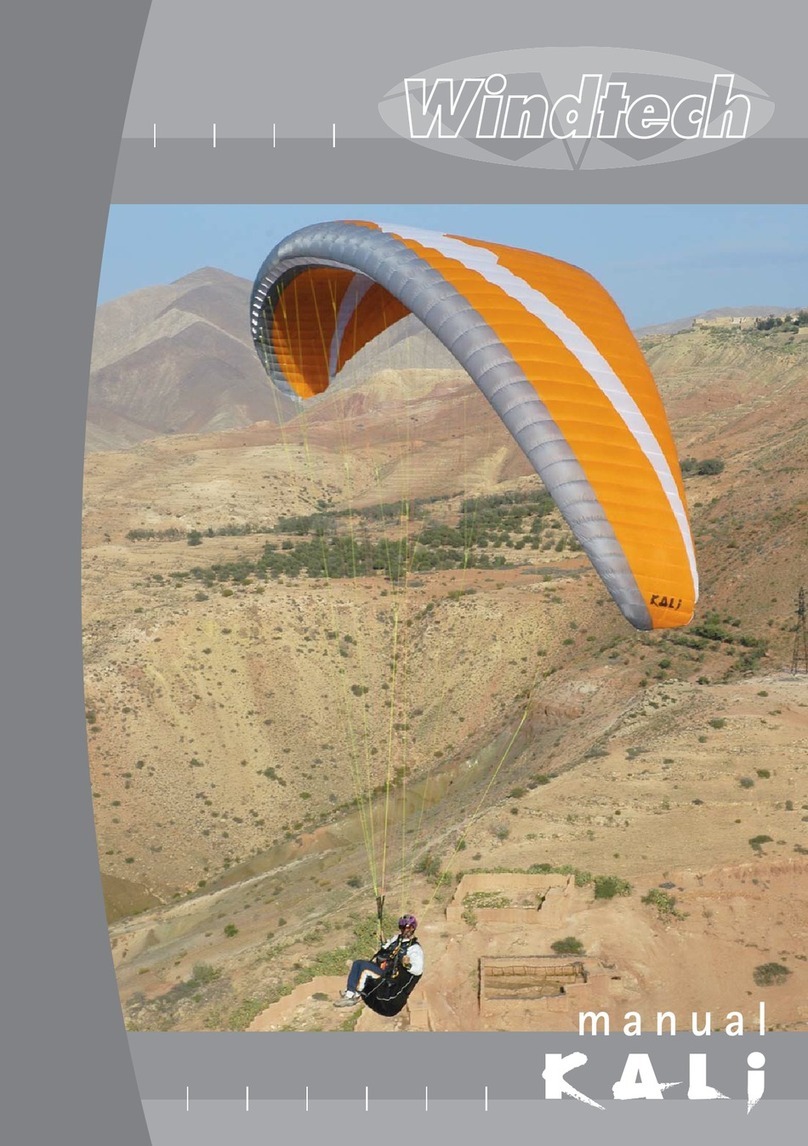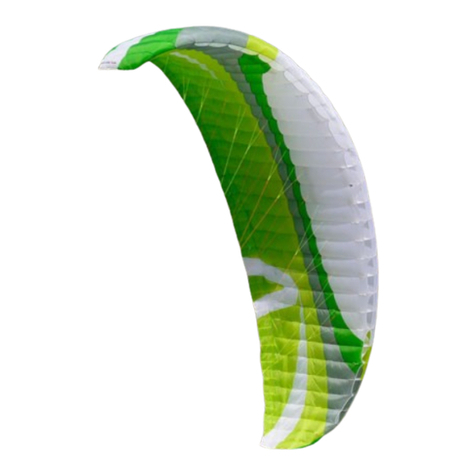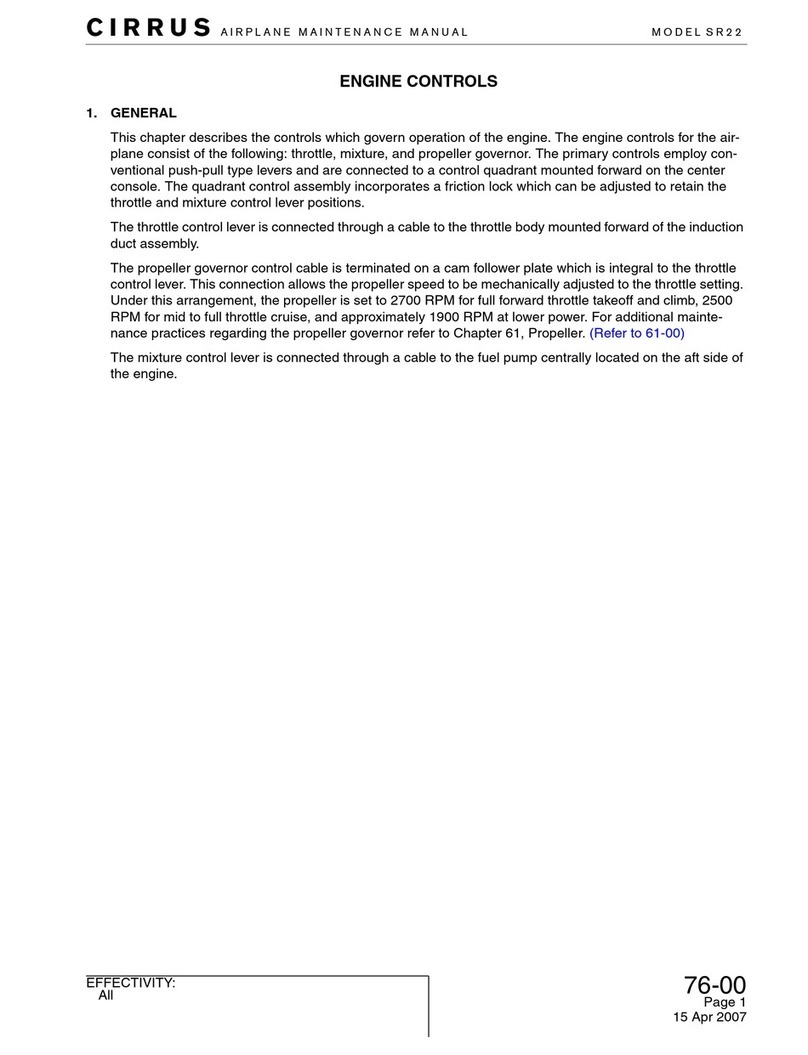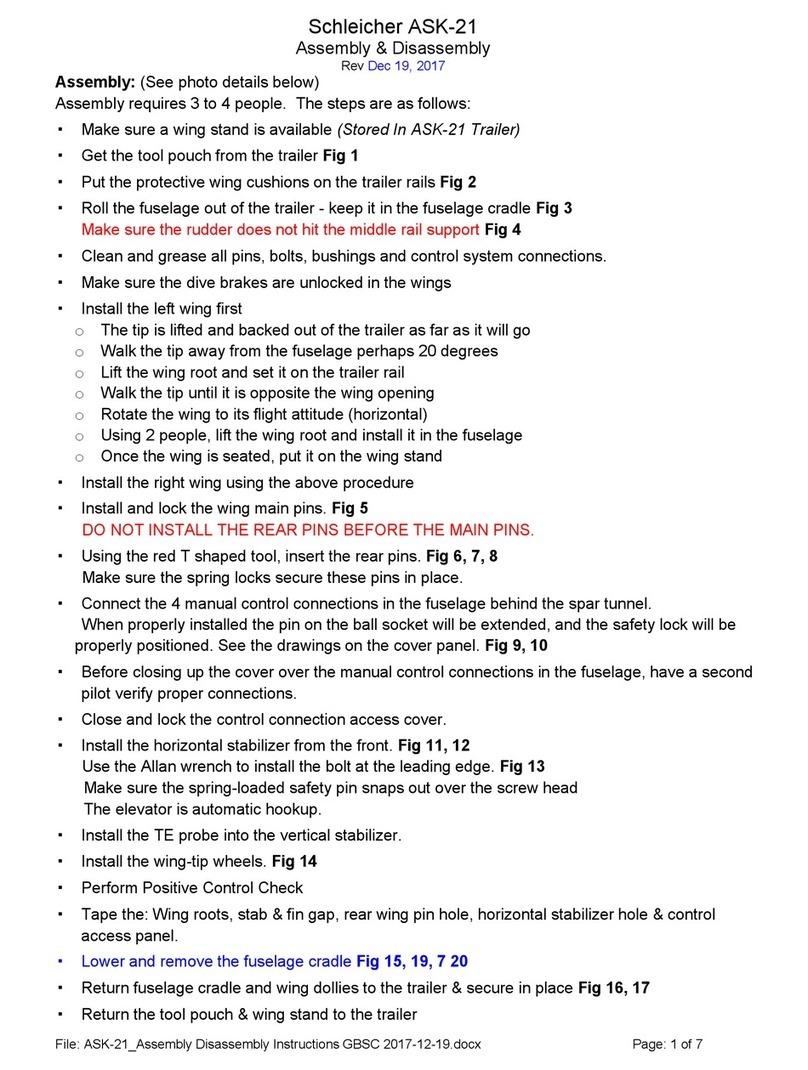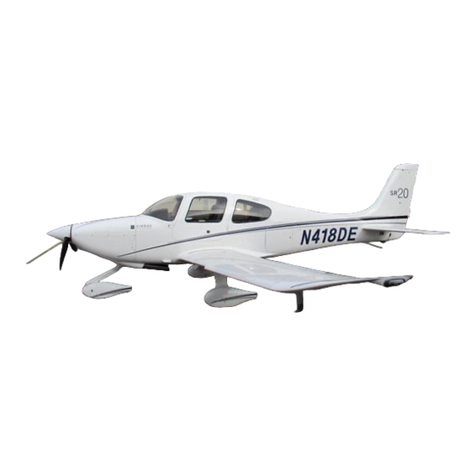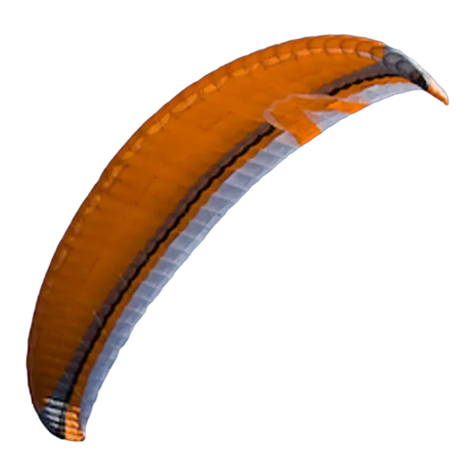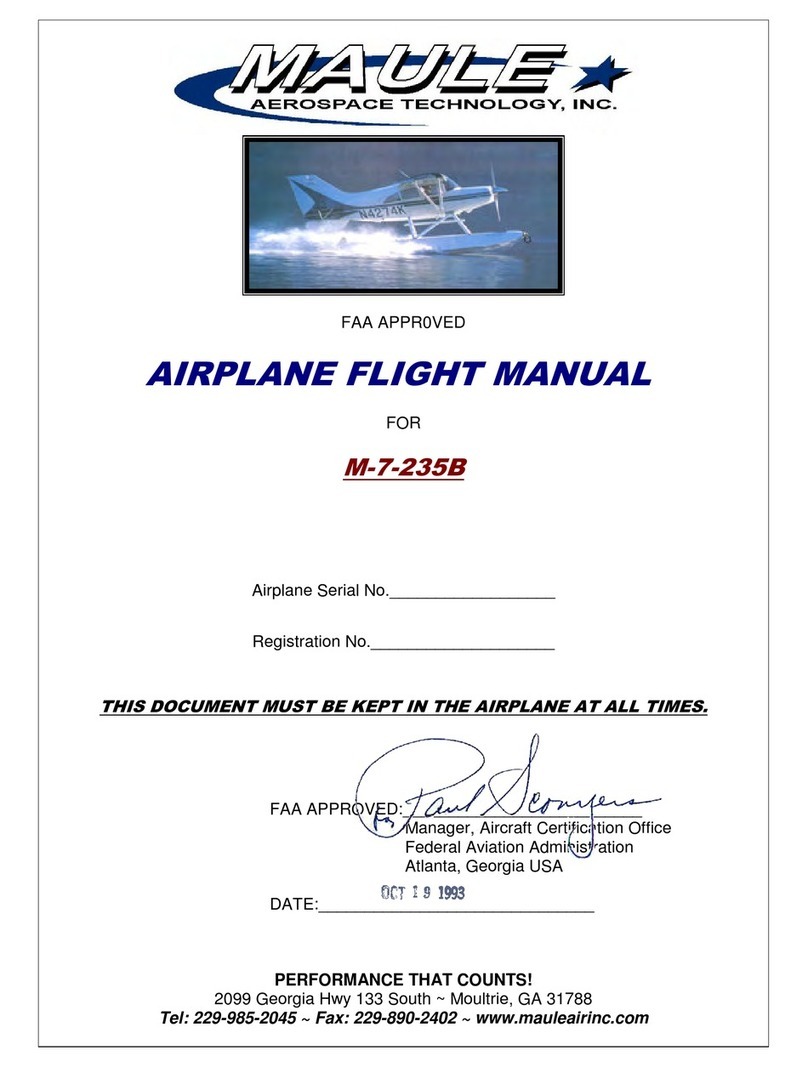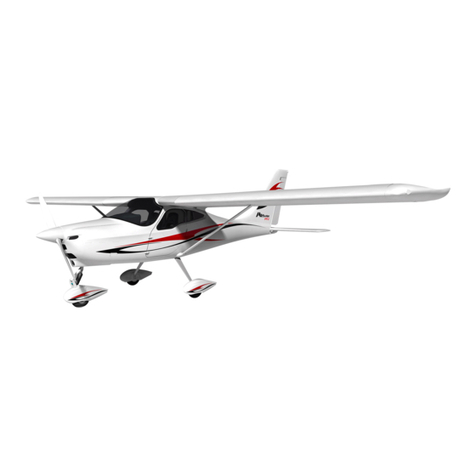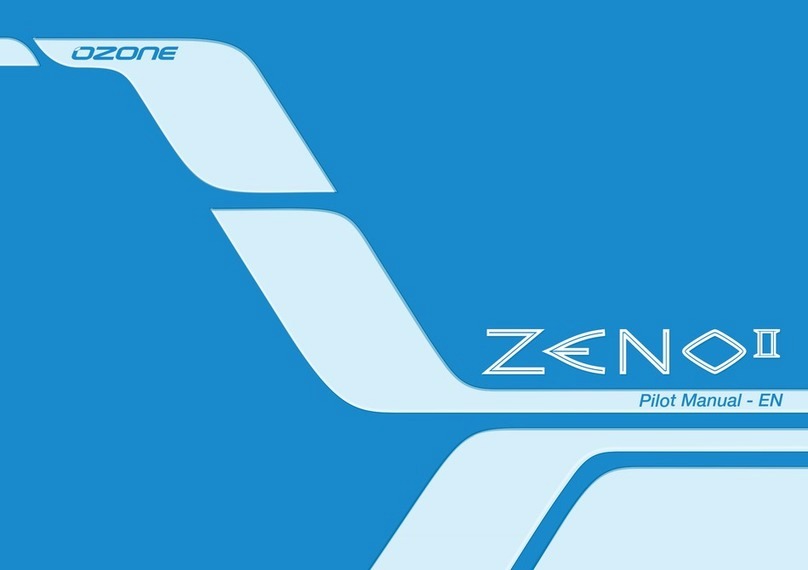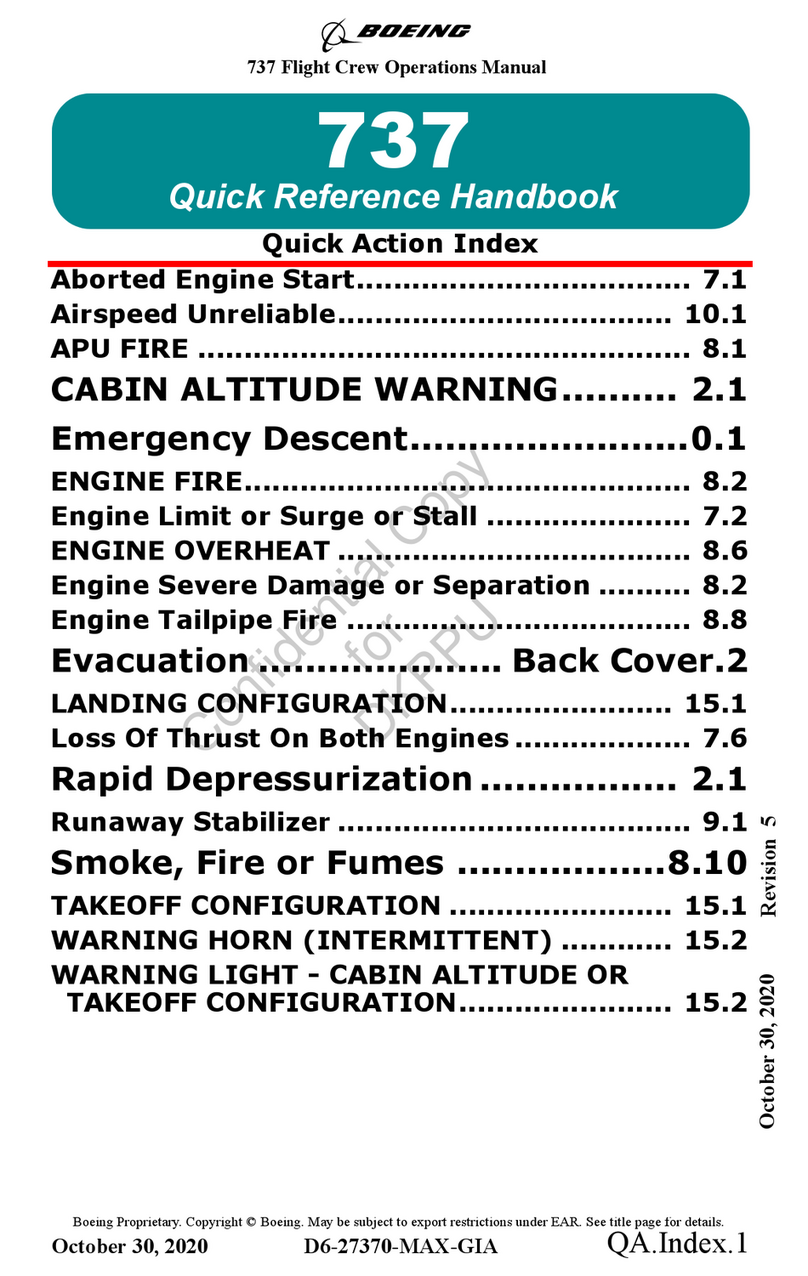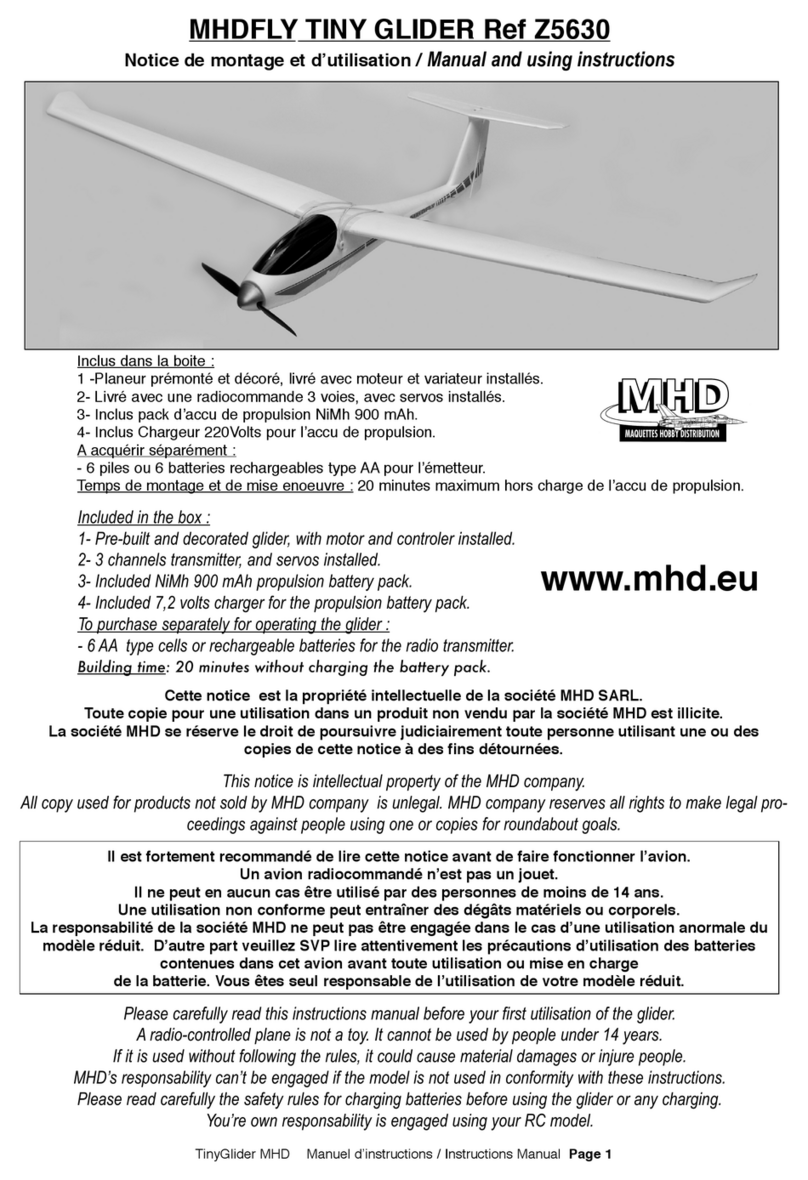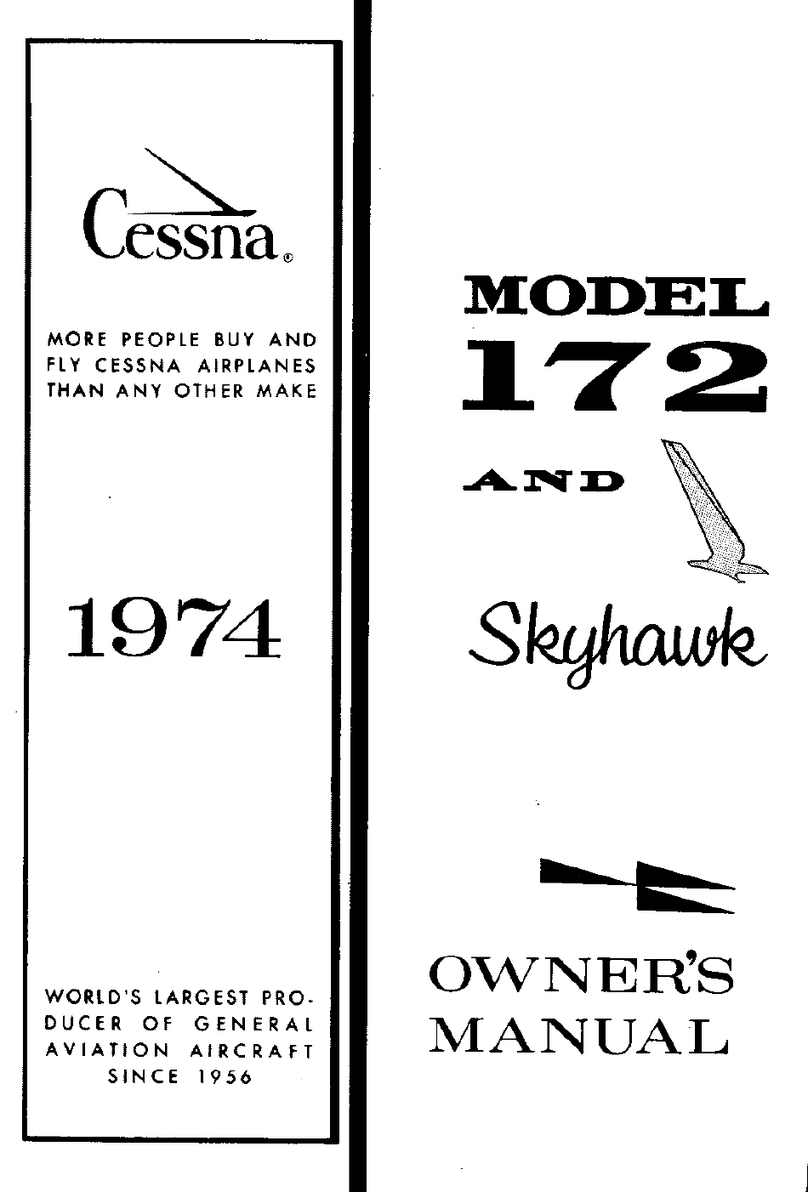9
most maneuvers), the loss is "very low", and to access this configuration (not recom-
mended in no type of paraglider), more than 9 kg of effort are needed.
-- powered flight
The concept of performance with the engine varies enormously compared to free flight.
This depends on the thrust and dimensions of the engine, its power, propeller diameter,
flight altitude, air density, wing loading, etc. Due to the increase in wing loading and
the extra resistance of the chassis and engine propeller, both sink rate and glide are
affected, so we consider the choice of engine very important that best suits our weight
and flight intentions, habitual altitude, etc. Combining all this series of variants, we
will achieve some yields or others.
> flight
Each paraglider has a quality control sheet, which Windtech incorporates to verify
that the glider has been checked and inflated.
Contact your dealer for additional information, and if your glider has not passed the
inflation test, ask them to do it for you. There is a label located on the central rib (lea-
ding edge), with its serial number, size, weight range, month and year of manufacture.
Check the risers, check that the maillons are correctly installed and check that the
lines are not tangled. The brakes should have about 10 cm left over. Starting from the
fist knot, the length of both cords must be symmetrical, and their circulation through
the pulleys must be fluid. You can modify that length but not more than 5/10 cm if it
is more comfortable for you to take shorter or longer brakes. We recommend that your
first flight be in mild conditions.
-- inflation and take off
The paramotor take-off is always more complicated than in free, more weight, the pushing
force of the engine, different position of the risers, the throttle grip in the hands, etc. We
have to take into account that a failed take-off can lead to the entanglement of the lines
with the propeller, causing it and the lines to break, and in the worst case, injuring a spec-
tator or ourselves. We recommend that you always follow a list of procedures when prepa-
ring the equipment, during takeoff and landing, always establishing wide safety margins;
Don't forget that flying with a propeller that rotates 40cm from our body is not a game. For
a good take off with the MAD MAX-2 always remember the following:
- Place the axis of the sail as perpendicular to the direction of the wind.
- Forming an arc with it, we will get the center to inflate first and rise straight and
uniform, if there is a little wind, a pre-inflation will increase our guarantee of success.
- Check that the bands are notturned and thetrimmersare firmlyse in theircorrect
position.
english
